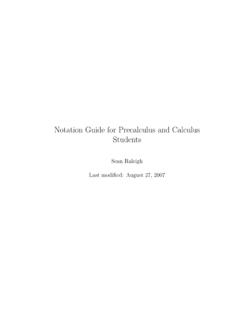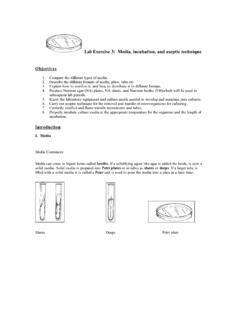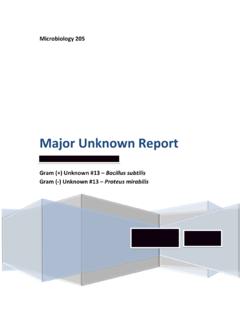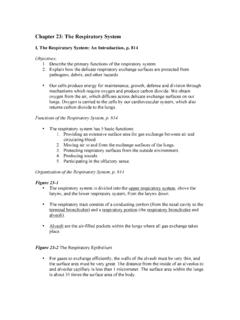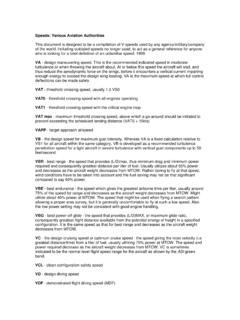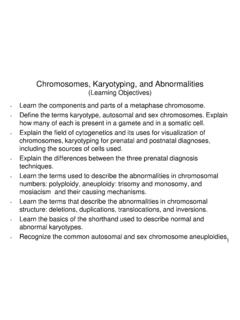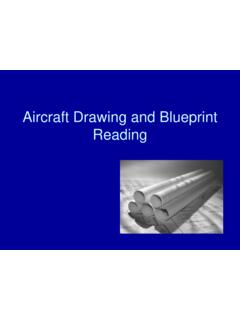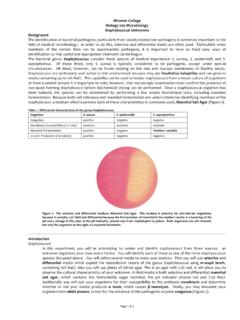Transcription of Bacterial Transformation The pGLO System
1 Biotechnology Explorer Bacterial TransformationThe pglo SystemCatalog Technical Service Call Your Local Bio-Rad Office or in the Call 1-800-4 BIORAD (1-800-424-6723)pGLOaraCGFP blaoriHow can jellyfish shed light on the subject?One of the biggest challenges for those studying biotechnology or molecular biology for the very firsttime is that many of the events and processes they are studying are invisible. Biotechnology Explorerhas a solution: a gene from a bioluminescent jellyfish and its Green Fluorescent Protein GFP. GFPfluoresces a brilliant green color when viewed using a hand held long wave ultraviolet light (pocket geol-ogy lamp).The gene for the Green Fluorescent Protein was originally isolated from the jellyfish, Aequorea wild-type jellyfish gene has been modified by Maxygen Inc., a biotechnology company in SantaClara, California. Specific mutations were introduced into the DNA sequence, which produce greatlyenhanced fluorescence in the protein.
2 This modified form of the GFP gene has been inserted intoBio-Rad s pglo plasmid and is now available exclusively from Bio-Rad for educational is incredibly bright. Using pglo to transform bacteria, students can actually observe gene expres-sion in real time. Following Transformation with Bio-Rad s Kit 2, GFP Purification, students purifythe genetically engineered GFP from their transformed bacteria using a simple chromatography pro-cedure. The entire process is visible using the hand held UV InvestigationThe intent of this curriculum is to guide students through the thought process involved in a laborato-ry-based scientific procedure. The focus here is not so much on the answer or result, but rather how theresult was obtained and how it can be substantiated by careful observation and analysis of data. Thisis referred to as a guided inquiry-based laboratory each step along the way, student understanding of the process and the analysis of data is of providing students with explanations or interpretations, the Student manual poses a series ofquestions to focus and stimulate thinking about all aspects of the investigation.
3 Answers are providedin the Teachers Answer involvement in this process will result in an increased understanding of the scientific processand the value of proceeding into a task in an organized and logical fashion. Furthermore, we are expect-ing that students who engage in this type of process will start to develop a more positive sense of theirability to understand the scientific s GFP-based curriculum is unique and has generated an unprecedented level of excitementamong science educators. We strive to continually improve our curriculum and products. Your inputis extremely important to us. We welcome your stories, comments, and MardigianProduct ManagerBio-Rad of ContentsInstructors GuidePageIntroduction to Transformation ..1 The pglo System ..1 Kit Inventory Checklist ..2 Implementation Points to Highlight ..3 General Lab Points ..5 Conceptual Points ..5 Instructors Advance Preparation Checklist.
4 7 Instructors Advance Preparation Guide (Graphic Laboratory Protocol)..14 Teacher Answer Guide ..16 Student ManualLesson 1 Introduction to Transformation ..28 Focus 2 Transformation Lab ..32 Review Questions ..38 Lesson 3 Data Collection and Analysis ..39 Analysis of Results ..40 Review Questions ..41 Lesson 4 Extension Activity: Calculate Transformation Efficiency ..43 AppendicesAppendix AHistorical Links to Biotechnology ..49 Appendix BGlossary of Terms ..51 Appendix CBasic Molecular Biology Concepts and Terminology ..53 Appendix DGene Regulation ..58 Appendix EReferences ..60 Introduction to TransformationIn this lab, your students will perform a procedure known as a genetic Transformation occurs when a cell takes up (takes inside) and expresses a new pieceof genetic material DNA. This new genetic information often provides the organism witha new trait which is identifiable after Transformation .
5 Genetic Transformation literally meanschange caused by genes and it involves the insertion of a gene(s) into an organism in order tochange the organism s Transformation is used in many areas of biotechnology. In agriculture, genes cod-ing for traits such as frost, pest, or drought resistance can be genetically transformed intoplants. In bio-remediation, bacteria can be genetically transformed with genes enabling themto digest oil spills. In medicine, diseases caused by defective genes are beginning to be treat-ed by gene therapy; that is, by genetically transforming a sick person s cells with healthycopies of the gene involved in their can be cut out of human, animal, or plant DNA and placed inside bacteria. For exam-ple, a healthy human gene for the hormone insulin can be put into bacteria. Under the right con-ditions, these bacteria can make authentic human insulin. This insulin can then be used to treatpatients with the genetic disease, diabetes, whose insulin genes do not function pglo SystemWith the pglo Transformation Kit, students use a simple procedure to transform bacte-ria with a gene that codes for a Green Fluorescent Protein (GFP).
6 The real-life source of thisgene is the bioluminescent jellyfish Aequorea victoria. The gene codes for a Green FluorescentProtein which causes the jellyfish to fluoresce and glow in the dark. Following the transfor-mation procedure, the bacteria express their newly acquired jellyfish gene and produce the flu-orescent protein which causes them to glow a brilliant green color under ultraviolet this activity, students will learn about the process of moving genes from one organismto another with the aid of a plasmid. In addition to one large chromosome, bacteria naturallycontain one or more small circular pieces of DNA called plasmids. Plasmid DNA usuallycontains genes for one or more traits that may be beneficial to Bacterial survival. In nature, bac-teria can transfer plasmids back and forth, allowing them to share these beneficial genes. Thisnatural mechanism allows bacteria to adapt to new environments.
7 The recent occurrence ofbacterial resistance to antibiotics is due to the transmission of s unique pglo plasmid encodes the gene for the Green Fluorescent Protein(GFP) and a gene for resistance to the antibiotic, ampicillin. pglo also incorporates a spe-cial gene regulation System which can be used to control expression of the fluorescent proteinin transformed cells. The gene for the Green Fluorescent Protein can be switched on in trans-formed cells simply by adding the sugar arabinose to the cells nutrient medium. Selection forcells that have been transformed with pglo DNA is accomplished by growth on antibioticplates. Transformed cells will appear white (wild type phenotype) on plates not containing ara-binose, and fluorescent green when arabinose is included in the nutrient agar. The uniqueconstruction of pglo allows educators and students , for the very first time, to easily exploremechanisms of gene regulation (Appendix D) and genetic selection.
8 And, the entire processis observable with an inexpensive long-wave UV order for your students to gain the most from this experiment they should know whata gene is and understand the relationship between genes and proteins. For a more detaileddiscussion of these and other basic molecular biology concepts and terms, refer to the reviewprovided in Appendix pglo Transformation Kit provides the opportunity for an additional experimentinvolving purification of the recombinant fluorescent protein from transformed bacteria usingthe GFP Purification Kit. (Bio-Rad catalog number 166-0005-EDU.)1 Kit Inventory Check (4) ListThis section lists the components provided in the Bacterial Transformation Kit. It alsolists required accessories. Each kit contains sufficient materials to outfit eight student work-stations. Use this as a check list to inventory your supplies before beginning the Components Class Kit(4) coliK-12 strain: HB101, lyophilized1 vial o2.
9 Plasmid ( pglo ) g1 vial o3. Ampicillin lyophilized1 vialo4. Arabinose lyophilized1 vialo5. Sterile Transformation Buffer 15 ml1 bottleo6. LB-Broth 10 ml, sterile1 bottleo7. LB/agar powder, sterile (to make 500 ml)1 poucho8. Pipettes sterile, individually wrapped50o9. Inoculation loops packs of 10 loops, 10 l, sterile8 pkso10. Petri dishes sterile bags of 20, 60 mm 2 bagso11. Microtubes ml(10 each: violet, red, blue, clear, green, aqua)60o12. Foam (floating) microtube racks8o13. Packaging box, instruction manual1oRequired Accessories - Not included in this kit1. UV Lamp Long wavelength (catalog number 166-0500-EDU) 1 requiredo2. Clock or watch to time 50 seconds1 requiredo3. Microwave oven1 requiredo4. 37 C incubator oven (catalog number 166-0501-EDU)*1 optionalo5. Temperature controlled water bath, 1 6 liter(catalog number 166-0508-EDU)**1 requiredo6. Thermometer that reads 42 oC1 requiredo7.
10 1 liter flask1 requiredo8. 500 ml graduated cylinder1 requiredo9. Distilled water (from supermarket) 500 ml1 requiredo10. Crushed ice and containers (Styrofoam cups work well)1 8 o11. 10 ml of bleach (household variety)10 mlo12. Permanent marker pens4 8o* If an incubator oven is not available try using an electric blanket, or construct a home made incuba-tor with a cardboard box and a low voltage light bulb inside. Otherwise incubate agar plates 48 hoursto 72 hours at ambient room temperature (see General Lab Skills - Incubation). ** If a temperature controlled water bath is not available, obtain a container (Styrofoam is best) for hotwater and use a hot plate or hot tap water to get the water to 42 TimelineEach of the three lab sessions is designed to be carried out in consecutive 50 minuteperiods. The detailed lab protocol can be found in the Student laboratory schedule for the studentsDay 1 Setting the StageLecture and discussionStudent considerations 1 4 (page 29)Day 2 Transformation Lab Transform cells and spread plates Student Lab focus questions (page 30)Day 3 Data Collection and Analysis Observe transformants and controlsAnalyze and interpret resultsStudent considerationsDay 4 Extension ActivitiesCalculate Transformation EfficiencyGFP Protein Purification Kit(Bio-Rad catalog number 166-0005-EDU)Lesson Points to HighlightThis section describes experimental and conceptual points which may prove challengingto students .
